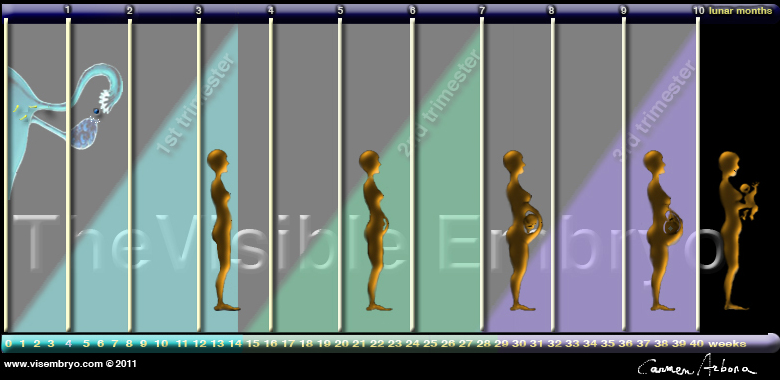|
|
Developmental Biology - Precision Medicine
Getting Cells Going
On a cellular level, physical contact also transfers energy across cell membrane...
In order to initiate chemical response, physical contact may be needed to really gets cells going. A team led by researchers from Osaka University find that aggregates of social amoebae need physical contact between cells in order to share chemical signals that get them moving.
"Collective cell migration", where groups of cells move together with a common purpose, is important in processes ranging from wound healing to tumor metastasis. Migrating cells respond to a both physical cues made through cell-to-cell contact as well as through waves of chemical signals sent out by close, local cells - which attract other cells to their location.
Recently, however, a team led by researchers from Osaka University have found this combined approach may not be the case for cells at all stages of development.
In the study published recently in Communications Biology, the researchers used model organism Dictyostelium discoideum to better understand the cues controlling collective cell migration during development. Referred to as social amoebae, unicellular D. discoideum cluster together in times of stress to form a multicellular aggregate called — a slug.
Though their less-than-enticing name may inspire shudders in readers who have encountered their animal namesake, cells within these slugs seem to like getting up-close and personal. Researchers found that while free-living cells respond to waves of chemical stimuli, slug cells require physical interaction to induce migration.
"Cyclic adenosine 3',5'-monophosphate (cAMP) is the only chemical cue for cell aggregation. Using live cell imaging, we clearly observed waves of cAMP, which can be visualized using a green fluorescent probe, during the initial stages of cell aggregation."
Yusuke V. Morimoto PhD, RIKEN Center for Biosystems Dynamics Research (BDR), Osaka ; Department of Bioscience and Bioinformatics, Faculty of Computer Science and Systems Engineering, Kyushu Institute of Technology, Iizuka, Fukuoka, Japan and corresponding author.
However, experiments revealed that cAMP signals gradually disappear during migration of multicellular slugs. Hidenori Hashimura, lead author on the study, explained how researchers observed changes in the intensity of chemical signals at different developmental stages.
"We found that the cAMP propagation waves — thought to control mass cellular movement during all stages of Dictyostelium development — actually disappeared once the cells aggregated into multicellular slugs. Although cell movement within the slugs was equal to that of cells in their early aggregation stage, the absence of cAMP signal waves suggest an alternative cue for collective cell migration," explains Masahiro Ueda in the Graduate School of Science, Biological Sciences at Osaka University and co-author.
The researchers propose that "contact following", where physical contact between cells allows them to follow each other, is likely responsible for collective cell migration during the slug phase of Dictyostelium development.
This is the first time researchers examined cAMP signal dynamics through multicellular phases of Dictyostelium development. Their work highlights the importance of examining cellular processes at all stages of development. Understanding collective cell migration cues is vital in developing methods of preventing metastatic cancer and promote wound healing.
Abstract
In Dictyostelium discoideum, a model organism for the study of collective cell migration, extracellular cyclic adenosine 3’,5’-monophosphate (cAMP) acts as a diffusible chemical guidance cue for cell aggregation, which has been thought to be important in multicellular morphogenesis. Here we revealed that the dynamics of cAMP-mediated signaling showed a transition from propagating waves to steady state during cell development. Live-cell imaging of cytosolic cAMP levels revealed that their oscillation and propagation in cell populations were obvious for cell aggregation and mound formation stages, but they gradually disappeared when multicellular slugs started to migrate. A similar transition of signaling dynamics occurred with phosphatidylinositol 3,4,5-trisphosphate signaling, which is upstream of the cAMP signal pathway. This transition was programmed with concomitant developmental progression. We propose a new model in which cAMP oscillation and propagation between cells, which are important at the unicellular stage, are unessential for collective cell migration at the multicellular stage.
Authors
Hidenori Hashimura, Yusuke V. Morimoto, Masato Yasui and Masahiro Ueda.
Acknowledgements
The authors thank S. Matsuoka (RIKEN BDR), T. Muramoto (Toho University), and Y. Kamimura (RIKEN BDR) for the kind gift of plasmids and mutant cell lines. This work was supported in part by JSPS KAKENHI Grant Numbers JP15K14498 and JP15H05593 (to Y.V.M.) and MEXT KAKENHI Grant Numbers JP26115720 and JP15H01335 (to Y.V.M.). Also, the work was supported partly by AMED-CREST (JP17gm0910001) from Japan Agency for Medical Research and Development, AMED. H.H. was supported by the RIKEN JRA program.
About Osaka University
Osaka University was founded in 1931 as one of the seven imperial universities of Japan and now has expanded to one of Japan's leading comprehensive universities. The University has now embarked on open research revolution from a position as Japan's most innovative university and among the most innovative institutions in the world according to Reuters 2015 Top 100 Innovative Universities and the Nature Index Innovation 2017. The university's ability to innovate from the stage of fundamental research through the creation of useful technology with economic impact stems from its broad disciplinary spectrum.
Return to top of page
| |
|
Feb 7, 2019 Fetal Timeline Maternal Timeline News
 Typical cAMP signaling dynamics at each developmental stage of Dictyostelium cells. Images were subtracted at 3 to 6 frame intervals to emphasize change in fluorescent intensity. Solid/broken arrows show position of first and second waves of sequential change. Images: Osaka University. VIDEO.
|



